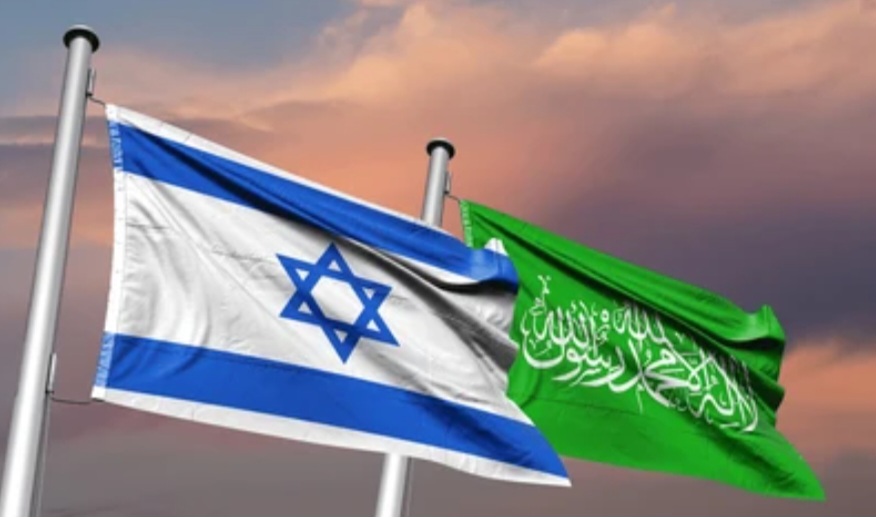By: Brig AJA Pereira, SM (Retd)

“You cannot shake hands with a clenched fist.” — Indira Gandhi
The Pause Deal
The Israel–Hamas ceasefire agreement, part of U.S. President Donald Trump’s 20-point peace plan marks a fragile but significant pause in one of the most protracted and painful conflicts of modern times. Brokered by the United States, Qatar, Egypt, and Turkey, the agreement comes nearly two years after Hamas’s devastating 07 October 2023 attack on Southern Israel that left deep scars on both sides. The agreement includes the release of the remaining Israeli hostages, phased Israeli troop withdrawals from Gaza, the exchange of prisoners, and the opening of key border crossings to allow humanitarian aid. Yet beneath the cautious optimism lies an inescapable truth that this truce is less a resolution and more a temporary reprieve in a conflict that has spanned for generations.
The agreement’s immediate outcome brought relief to thousands of families. Hamas released the final twenty living Israeli hostages, held for more than seven hundred days, in exchange for Israel freeing nearly two thousand Palestinians, including 250 serving long sentences. Aid convoys began trickling into the battered Gaza Strip, and limited Israeli withdrawals raised hopes that civilians might finally rebuild their shattered lives. But even as negotiators heralded a “new beginning,” few believed it marked an end to decades of bloodshed rooted in history, displacement, and mistrust.
Blooded History
The story of Israel itself is inseparable from that history. Born amid the ashes of World War II, Israel emerged in 1948 from the United Nations Partition Plan that divided the British Mandate of Palestine into separate Jewish and Arab states. The Jewish homeland was to comprise about 56 percent of the land, while the Arabs were allocated 43 percent, with Jerusalem set aside as an international zone. Arab leaders rejected the plan, and as Britain withdrew, war erupted. By the armistice of 1949, Israel had expanded its territory to roughly 77 percent of the former mandate. The nascent state became home to Jewish immigrants from across the world, even as hundreds of thousands of Palestinian Arabs fled or were displaced, an event remembered in the Arab world as the Nakba, or catastrophe.
Israel has fought repeated wars with its neighbours: the 1948 War of Independence, the 1956 Suez Crisis, the 1967 Six-Day War, the 1973 Yom Kippur War, and the 1982 Lebanon invasion. Each conflict redrew boundaries, altered alliances, and hardened attitudes. The Six-Day War was particularly transformative, bringing the West Bank, East Jerusalem, Gaza, Sinai, and the Golan Heights under Israeli control, conquests that still shape today’s geography and geopolitics. Over time, Israel evolved into a technologically advanced democracy and military power, yet one perpetually surrounded by hostility, living under the shadow of rockets, raids, and recurring wars.
The Present Conflict
Among its most enduring flashpoints has been Gaza, a narrow coastal enclave barely forty kilometres long and between six and twelve kilometres wide, bordered by Israel, Egypt, and the Mediterranean Sea. Home to about 2.1 million people, Gaza is one of the most densely populated regions in the world. Hamas, which seized control of the strip from Fatah in 2007, has since governed under a crippling Israeli Egyptian blockade. The territory’s people have endured repeated wars, economic collapse, and cycles of reconstruction and destruction.
The latest and most devastating phase began on October 7, 2023, when Hamas militants launched a surprise incursion into Southern Israel, killing around 1,200 people and taking 251 hostages. Israel’s response was swift and overwhelming. Massive airstrikes and a ground invasion followed, reducing entire neighbourhoods of Gaza to rubble. According to health authorities in Gaza, more than 70,100 Palestinians have been killed in the two-year conflict, many of them women and children. Tens of thousands more have been wounded, and nearly the entire population has been displaced. Israel’s government framed the campaign as a necessary fight for national survival, while the international community watched in horror as Gaza’s humanitarian crisis deepened.
Cost of Conflict
For Hamas, the cost has been immense. Its leadership ranks were decimated through targeted Israeli airstrikes and intelligence operations. Command tunnels, rocket stockpiles, and administrative networks have been destroyed. Yet, paradoxically, the peace deal now allows Hamas to claim a form of symbolic victory. By securing the release of hundreds of Palestinian prisoners including prominent figures in exchange for a handful of remaining hostages, Hamas reinforces its narrative as the defender of Palestinian dignity and resistance. Historically, such exchanges have bolstered its domestic standing, allowing it to replenish its ranks by recruiting from the very communities devastated by Israeli bombardments. History suggests that despair and dispossession can easily breed radicalization. For every militant killed, new grievances are born among those who have lost homes, livelihoods, or entire families.
For Israel, the cost of the war has not only been measured in blood but also in the erosion of its security image. The October 7 attack carried out in one of the most surveilled and fortified regions exposed grave intelligence lapses. Despite its technological prowess, Israel failed to prevent the deadliest assault on Jews since the Holocaust. The ensuing war, while militarily punishing Hamas, left Israel diplomatically isolated in many quarters, accused of disproportionate use of force, and confronting a moral reckoning at home.
An Uncertain Future
The current peace agreement stands on delicate ground. Many previous peace or ceasefire deals have held only temporarily. The pattern has often been eruption of violence, ceasefire, temporary relief, reconstruction delayed, grievances unaddressed and conflict resumption. Decades of conflict, broken ceasefires, cycles of violence, displacement, and destruction have bred deep mistrust on both sides. Israel fears future attacks; Palestinians fear further incursions, occupation, punitive measures.
The human toll on both sides is staggering. Israeli families mourn their murdered or abducted loved ones; Palestinians grieve for tens of thousands of dead, maimed, and displaced. The devastation across Gaza is near total with hospitals, schools and residential blocks lying in ruins. Meanwhile many people are displaced, traumatized, impoverished. Rebuilding and relocating will take decades and billions of dollars. High death toll, especially among civilians (including many children), loss of livelihood, homes have the potential for rising radicalisation and recruitment among the young. This makes any peace fragile, as a future generation may feel vengeance or resistance is justified.
Pause or Peace
The peace deal is important and offers respite, but it does not resolve the root issues: contested land, displacement, rights, governing authority, demilitarization, refugees, Jerusalem, security. In truth, lasting peace in the Holy Land demands more than ceasefires. It requires a reckoning with history and acknowledging the trauma of both sides, upholding international law, and nurturing co-existence instead of mutual fear. The success of the deal will depend on sustained humanitarian commitment, credible reconstruction, and mechanisms to prevent renewed violence. Without addressing these fundamental requirements, any peace may be temporary. Yet, regional rivalries, ideological divisions, and global power politics continue to complicate even modest progress. In such a climate, the peace deal is best seen not as the end of conflict but as a fragile pause in a seemingly endless cycle.
As Gaza struggles to rebuild from ashes and Israel grapples with its own internal divisions, both societies face a moment of choice: whether to perpetuate the logic of vengeance or to imagine a future beyond it. For now, the world watches a battered region take a tentative breath between wars uncertain whether it signals the beginning of peace or merely another calm before the next storm.

About the Author
Brigadier Anil John Alfred Pereira, SM (Retd) is Indian Army Veteran from Goa, who served the nation with distinction for 32 years.


I’ve bookmarked this post for future reference. Thanks again!